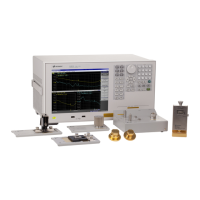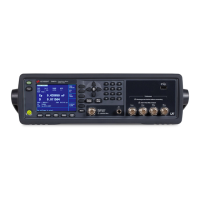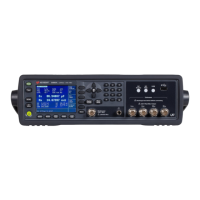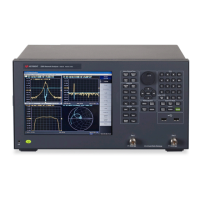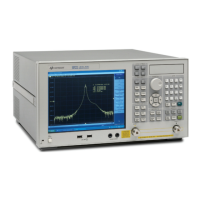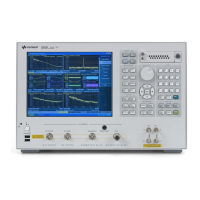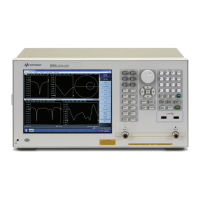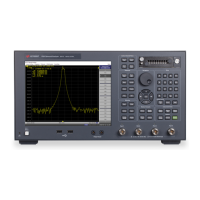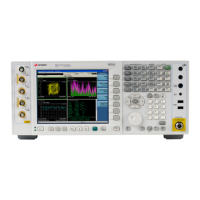Measurement
129
3. Alternatively, when you have the main marker displayed on the
trace, press Marker Fctn > Marker Reference to use the value at the
marker position (i.e., the distance from the origin) as the full scale
value. Thus, you can change the trace scale by placing the full scale
circle at the position indicated by the main marker.
Scaling Trace with Reference Tracking
1. Activate the trace you want to perform reference tracking.
2. Press Scale > Reference Tracking.
3. Press Tracking > OFF|Track Peak|Track Freq to select between
turning OFF the reference tracking option, track by peak reference or
track by frequency.
4. Press Track Frequency, and input the desired frequency value.
Trace-based Comparison and Calculation
• Identifying Differences between Data and Memory Traces through
Comparison or Calculation
• Subtracting an Offset Value
Other topics about Setting Up the Display of Measurement Results
Traces 1 and 2 each provide two different trace types: data and memory.
The data trace keeps track of the DUT's characteristics as it is being
tested, while the memory trace captures the measurement data at a
specific point in time and displays that data. With the data trace, you can
perform a simple calculation on the measurement data and display the
results. For example, you can display the differential between the
measured data and the memory trace data or the result of subtracting
your specified offset value from the measured data. Table below lists the
trace types and their functions:
Trace Types Function
Trace
1
Data trace
(yellow
1
)
Displays measurement d
ata/calculations (updated du
measurement cycle)
Memory trace
(green
1
)
Stores and displays previously measured data (captu
Display > Data -> Memory is selected)
Trace Data trace Displays measurement data/calculations (updated d
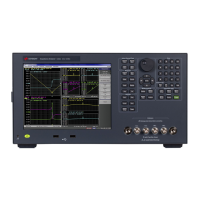
